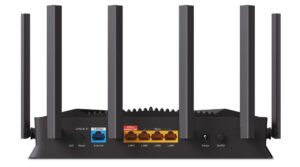Intel to Expand Arrow Lake’s L2 Cache Capacity
Intel intends to increase the L2 capacity of its upcoming codenamed Arrow Lake processors to 3 MB per core, according to Golden Pig Upgrade (via @9550pro), a renowned leaker who tends to have accurate information about future Intel products. If the information is accurate, then Arrow Lake CPUs will offer higher performance in memory bandwidth-dependent applications.
Intel’s 13th Generation Core ‘Raptor Lake’ processor features a 2 MB L2 cache per high-performance Raptor Cove core and 512 KB L2 cache per energy-efficient Greacemont core, thus has 32 MB of L2 cache in total as well as 36 MB of L3 cache in total (3 MB L3 cache per P core, 3 MB per four E cores).
| Row 0 – Cell 0 | P-Core | P-core L2 | E-Core | E-core L2 |
| Alder Lake | Golden Cove | 1.25 MB | Gracemont | 512 KB |
| Raptor Lake | Raptor Cove | 2 MB | Gracemont | 512 KB |
| Meteor Lake | Redwood Cove | ? | Crestmont | ? |
| Arrow Lake | ? | 3 MB | Crestmont | ? |
| Lunar Lake | Lion Cove | ? | Skymont | ? |
Assuming that Intel’s Arrow Lake processors will retain eight high-performance cores, its total L2 capacity for performance cores will increase to a sizeable 24 MB. Meanwhile, it is unclear whether Intel also plans to expand the size of the L3 cache of Arrow Lake’s performance cores. Keeping in mind that Arrow Lake CPUs will be made on Intel’s 20A (2nm-class) fabrication process, the company might increase the size of all caches as it may not have a significant impact on die size and cost. Yet, only Intel knows what makes sense to do to increase performance without significantly affecting costs.

Increasing the L2 cache capacity for high-performance cores is done to boost performance. One of the primary benefits of increasing cache size is to improve the hit rate. If the working set of a given workload fits better within the enlarged L2 cache than it did before, this will reduce the need to access the slower L3 cache or main memory. This potentially leads to a reduction in average memory access time and potential energy savings, especially beneficial for workloads whose data sets can better fit within the enlarged L2 cache.
On the downside, a larger L2 cache can introduce slightly longer access latency. Keeping in mind that Intel’s processors already have large L3 caches increasing L2 cache size gets diminishing returns on performance benefits. Additionally, a large L2 cache might consume more power, produce more heat, and increase die area.














